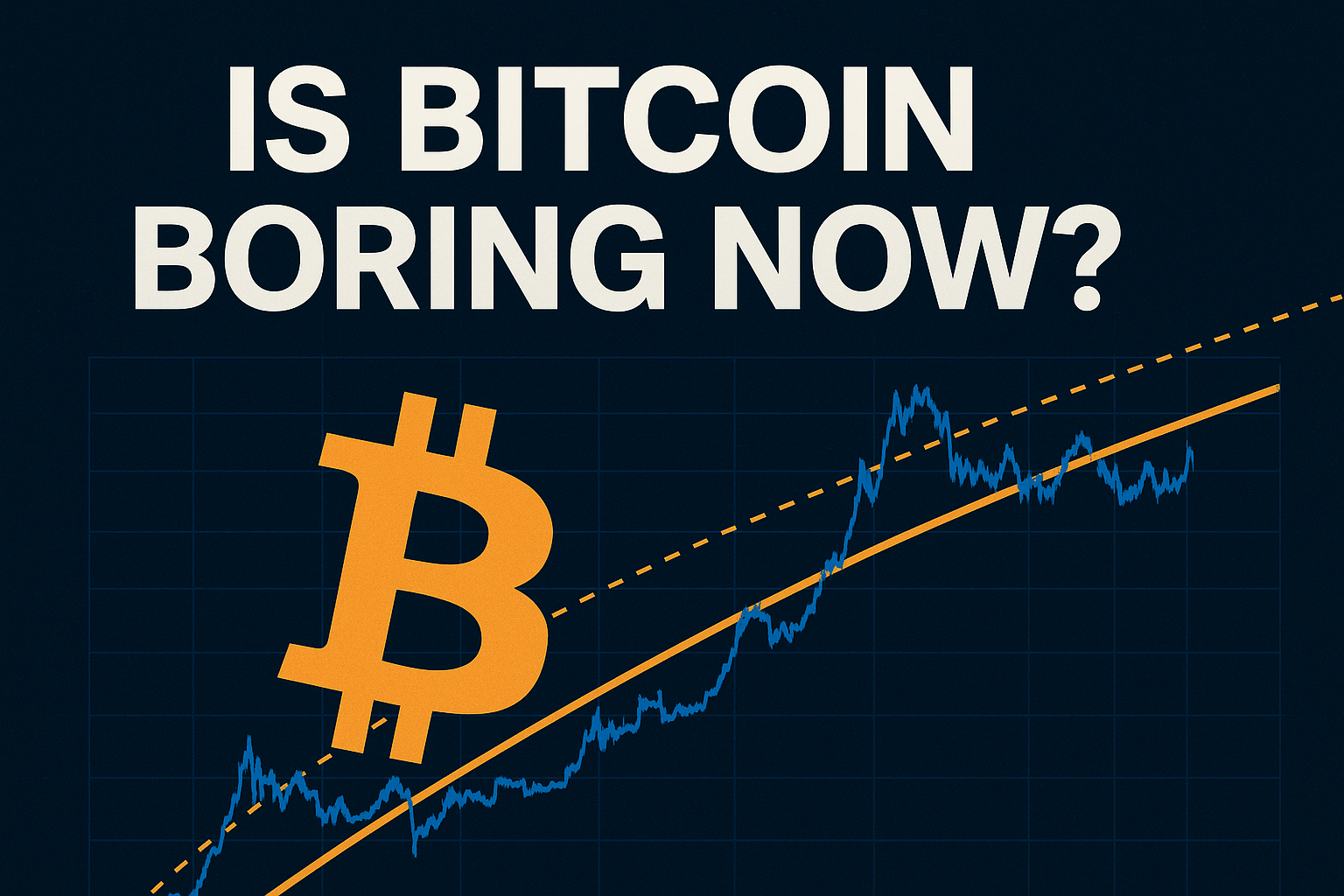Bitcoin: Flatlining or Coiling to Strike?

For what’s meant to be a notoriously volatile asset, Bitcoin has been... well, unusually boring lately—especially for those of us used to the high-octane world of Bitcoin Treasury Companies (BTC-TCs).
But zoom out, and a clearer picture emerges.
Bitcoin Still Dancing with the Power Law
Bitcoin has been bouncing around its long-term power law trend for over a year now. It’s currently running a little warm—but nowhere near overheated.

Recently, we updated our power law quantile model. All the quantile lines nudged slightly higher, and the slope of the trend has steepened—both of which are bullish signals.

However, the long-term trend remains intact, with an improving R² and steadily decreasing volatility with a ‘boring’ 30% CAGR.

Volatility at Record Lows: Calm Before the Storm?
In fact, volatility is now at an all-time low.

If you're a permabull, you might call this the calm before the storm—the spring coiling tighter before an “omega candle” lights the fuse.
But that’s not the only explanation.
Enter the Bitcoin Treasury Companies
This time might be different because of the persistent, measured buying pressure from Bitcoin Treasury Companies—steadily stacking sats without the excessive leverage of past cycles.
As highlighted in a recent chart by @apsk32, this stage of the halving cycle is historically when the mega bull run takes off.

Macro Tailwinds: M2, Gold, Hash Rate and More
The macro outlook is similarly optimistic. The M2 money supply is growing again, and more government liquidity will continue to be absorbed by Bitcoin.

Even Elon and DOGE couldn’t tame the wasteful government spending. It seems waste, wars, and inflation will be with us for a while yet.
Pullbacks Before Liftoff? Watch the Oscillator
Our regression model—which incorporates M2, gold, hash rate, and the S&P 500—continues to suggest the market backdrop is supportive of a longer-term uptrend, suggesting a $132k target.

Following the recent pullback, our oscillator is entering the oversold zone. Historically, these dips have often preceded significant moves higher, making current prices an attractive entry point for long-term investors.
The Uptober Effect—and Something Stronger
We typically see a seasonal lull between now and October—often dubbed the “pre-Uptober slump”—as traders de-risk before summer holidays.

But the stronger signal, even more than the halving and annual cycles, may be the presidential inauguration cycle. Historically, this is when the market gets a jolt of fresh energy: the new administration settles in, spending bills pass, and capital starts to flow again.

This time seems no different.
Short-Term Uncertainty, Long-Term Clarity
Can we say with certainty what will happen in the next three months? Of course not.
But long term?
We’ve seen this movie before.

If Bitcoin were to surge to $280,000 by year-end, I might personally start to get a little nervous and de-risk.
But short of that, things look relatively stable, so long as government money and debt continue to flow. It seems Bitcoin has found its footing.
Why This Cycle Feels Different
I’m not expecting the kind of boom-and-bust cycles we saw in previous years. As Saylor said in a recent interview: “Winter’s not coming back.”
Yes, there will still be leverage—there always is—but this cycle feels fundamentally different.
BTC-TCs (also known as Leveraged Bitcoin Equities, or LBEs) generally carry significantly less debt than the average mainstream company and substantially less than FTX and degenerate traders from previous cycles. And unlike the degen traders of past cycles, these players aren’t likely to part with their Bitcoin anytime soon.
So... Where Are We Going?
Honestly… no one knows.
But the long-term trajectory is unmistakable.
Nothing stops this train.
Whatever unfolds in the coming months, the destination is higher. And there’s no better place to be.
What Do You Think?
Is Bitcoin just catching its breath—or is something much bigger brewing beneath the surface?
Drop your thoughts in the comments below.
Are you stacking, waiting, or de-risking? Let’s hear your take.
